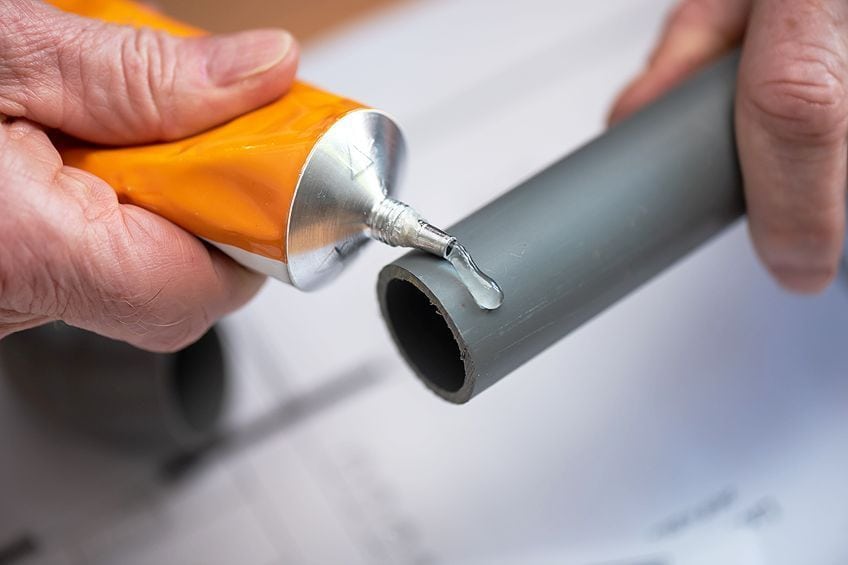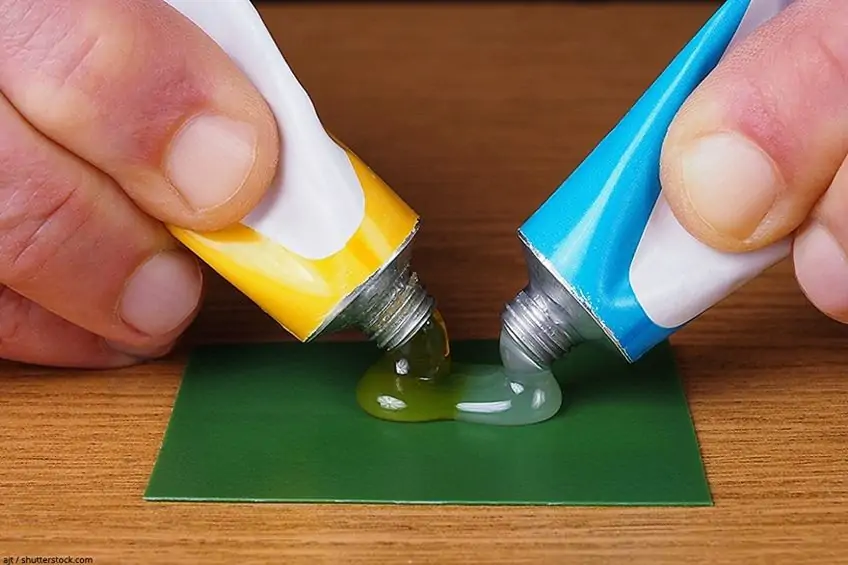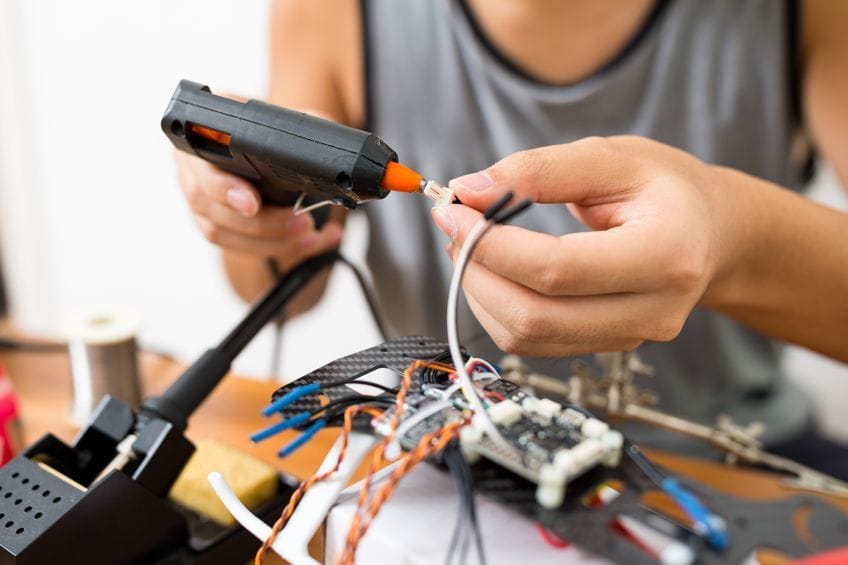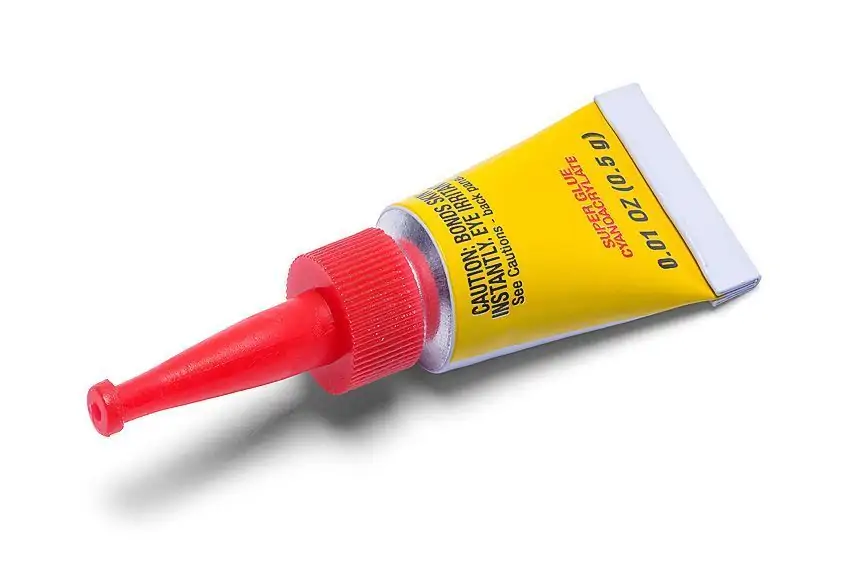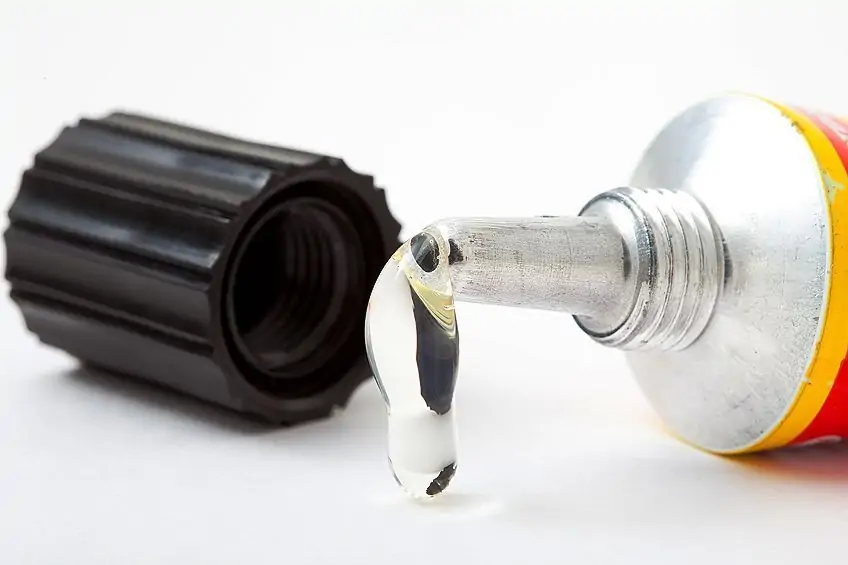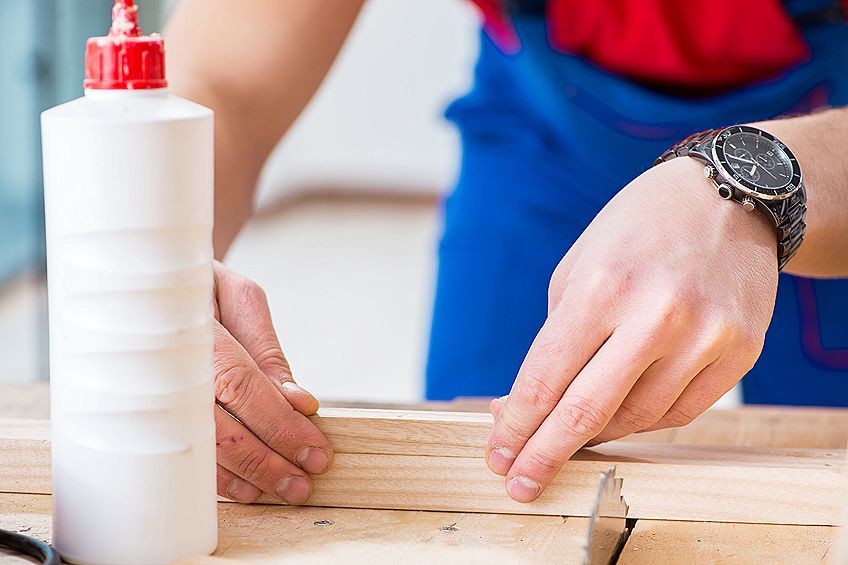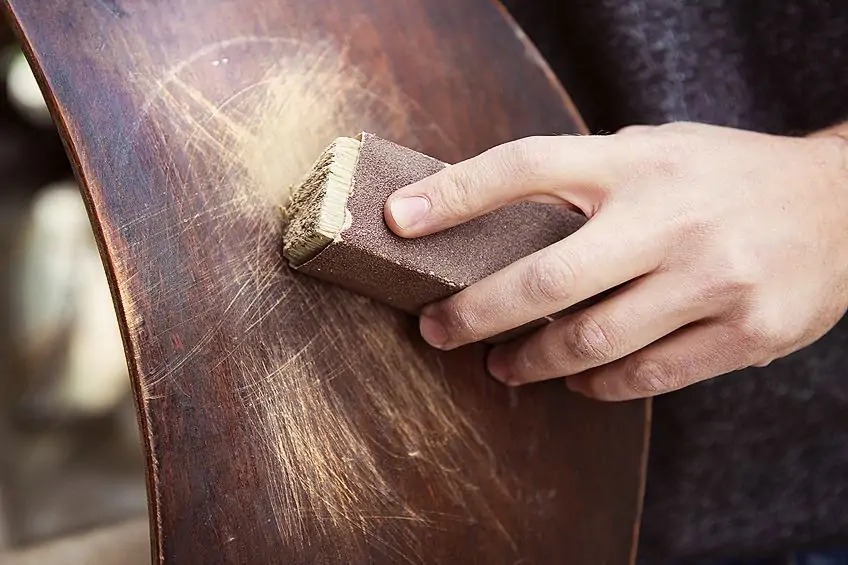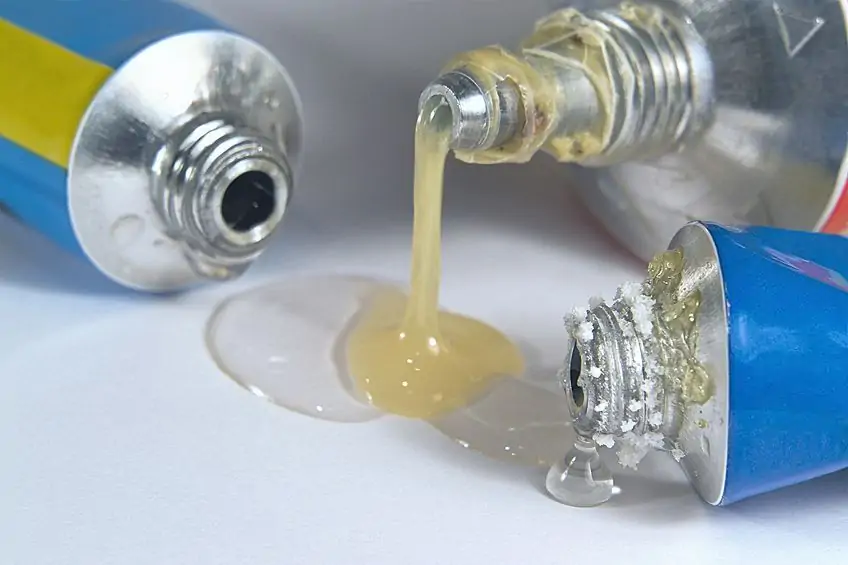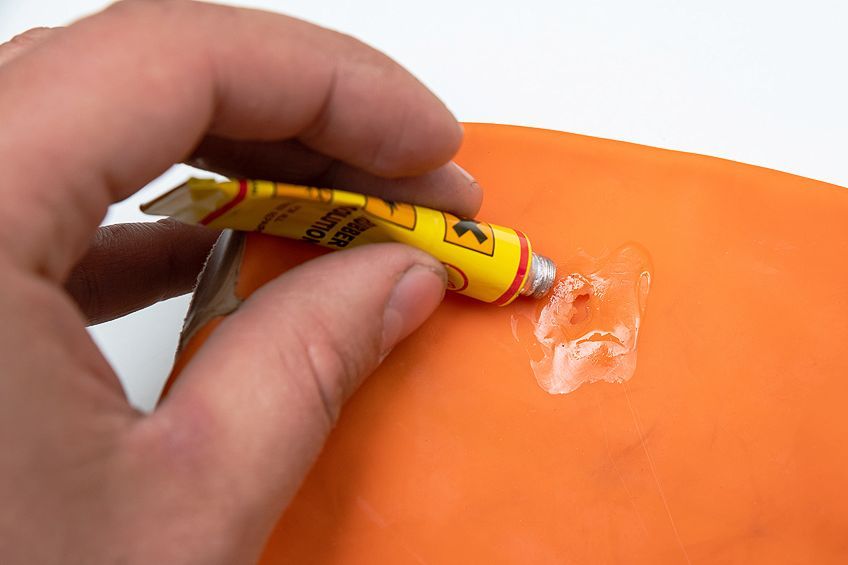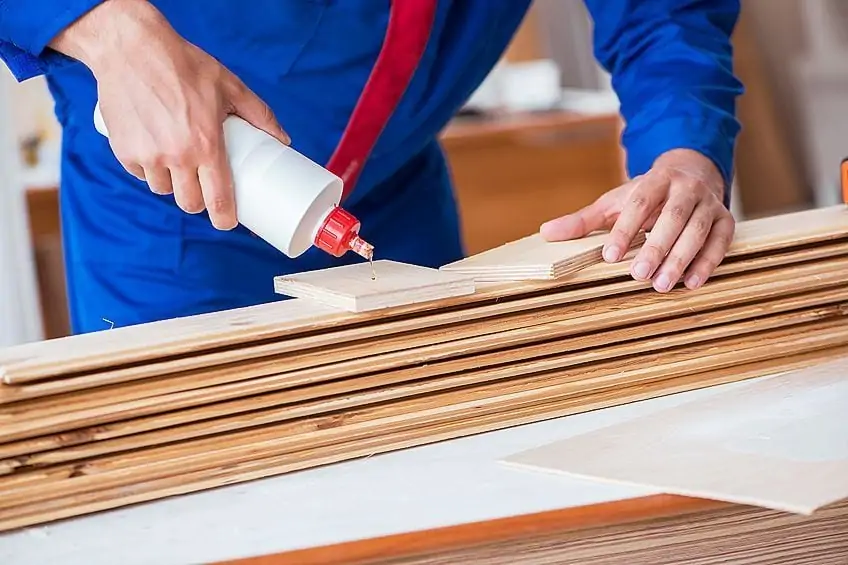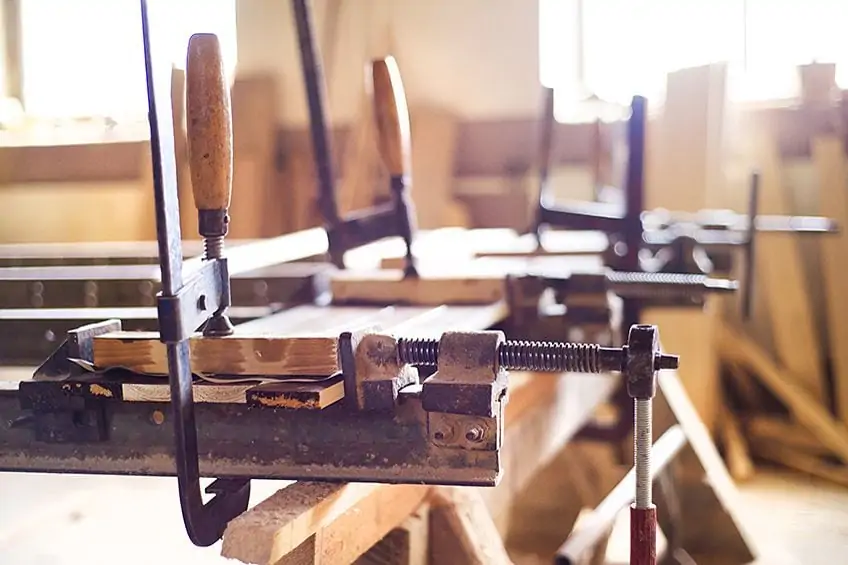How to Glue Plastic to Wood – Best Methods with Guide
This post may contain affiliate links. We may earn a small commission from purchases made through them, at no additional cost to you. You help to support resin-expert.com
Plastic can be difficult to glue as they are non-porous, and there are so many varieties. In some cases, you cannot even tell what type of plastic it is, as there is no recycle mark. Some of the more difficult plastics to work with are known as polypropylene or polyethylene. Gluing wood to plastic is, therefore, not as simple as it sounds. Every adhesive has different formulas for different applications, so not all adhesives can be used for the same project. For example, wood glue on plastic is not the best choice and you will need to choose the right plastic to wood glue to create a strong bond.
Table of Contents
Different Types of Plastic to Wood Glue
As mentioned, there are many different types of plastic, and the most common of these include, Polyethylene Terephthalate (PET), which has a recycle symbol of 1. Then you get High-Density Polyethylene (HDPE), Low-Density Polyethylene (LDPE), Polyvinyl Chloride (PVC or Vinyl), Polypropylene (PP), and Polystyrene (PS or Styrofoam).
All these plastics have their own characteristics, they can be rigid or more flexible, heat resistant or moisture and chemical resistant. Some are used for food, while others can be toxic, so as you can see, plastic is not a single material and can be quite complex.
Wood, on the other hand, is a little less complex, but you can get surfaces that have been finished or sealed with varnish or polyurethane. You might also have to consider using mechanical bonds like screws or bolts If the project of gluing plastic to wood becomes too large and one or both objects are heavy.
However, when considering how to glue plastic to wood, there are several available options, including epoxy, superglue, cement, hot glue, silicone caulk, polyurethane adhesives, and wood glue.
Bonding Plastic to Wood With Epoxy
Epoxy is considered one of the best ways for gluing plastic to wood. Epoxies consist of two compounds, which when combined, cures to form a resin plastic. In the process, epoxy also creates a strong bond that is effective with most types of plastics. You have to work carefully with epoxies, as they do produce toxic fumes and you will have to work in a space where there is plenty of air circulation. Also, wearing protective items like a mask and gloves is important.
Some products come in two separate containers, a hardener, and epoxy, and you will have to do the mixing yourself. You must follow the product directions exactly, as the correct mixing ratio is essential for success. For smaller projects, you also get an epoxy that comes in syringes and this mixes as it is applied. Once the two components have been mixed and you apply to either the wood or plastic surface, you can then place the two objects together. Depending on the epoxy you use, you will have to wait for about 24 hours for the epoxy to fully cure.
Gluing Plastic to Wood With Superglue
Superglue is one of the most common adhesives and most homes have a tube lying in a drawer somewhere. Superglue is easy to use, extremely affordable, forms a strong bond, and you can get it at your local hardware store. However, there are a few varieties when it comes to superglue, and you will have to check if the one you choose is made to work on plastics.
To create the strongest bond, you will need to prepare the surfaces before applying the glue. Simply roughen the plastic or wood surface, or both, and apply the glue. Press the two objects together and allow them to set.
Hot Glue
Hot glue is a popular adhesive in the arts and crafts world, and it can form a strong bond between many different materials. Hot glue can also be used to bond plastic to wood; however, it is not the best solution. Hot glue does not bond with all types of plastics but should work on the more common plastics. Using hot glue for outdoor projects is not a good idea, as the heat and other weather conditions will weaken the bond.
First, apply the hot glue to the plastic surface and then place it onto the wood surface and press. Wait for it to cool down, and there should be quite a strong bond that has formed. If the bond comes loose with minor force, it might be best to try another adhesive option like superglue or epoxy.
Contact Cement
Contact cement creates a flexible and permanent bond and can be used on most surfaces. However, it works best on non-porous surfaces like plastic, glass, or rubber. The only problem with contact cement is that it works best on larger surfaces. You do get water-based products today, however, the solvent-based contact cement provides a more effective bond. You must apply the contact cement to both surfaces and then place them together. Once together, the two parts should bond straight away.
Since it is solvent-based, working in a well-ventilated space is advised.
Polyurethane Adhesives
This can be used on most plastics and many other surfaces like metal, wood, rubber, glass, and more. These adhesives are good at bonding polyvinyl chloride (PVC), thermoset plastics, thermoplastics, polycarbonate, amongst others.
The adhesive provides a flexible bond that is waterproof and permanent. However, polyurethane adhesives are toxic, they expand, you only have a short time to work with it, it requires moisture to form a bond, and you need paint thinners to clean.
Silicone Caulk
When it comes to hard plastics like polyethylene and polypropylene, silicone caulk is an alternative to other adhesives which cannot grab onto the plastic to form a bond. You will need some silicone caulk and a silicone caulk gun for application. The caulk should take around 24 hours to cure completely.
This method can only be used on larger repairs or projects and is not recommended for smaller repairs as it is difficult to handle.
Wood Glue
Will wood glue work on plastic? Wood glue on plastic is an extremely common type of glue. The glue is known as polyvinyl acetate or PVA and provides a strong bond when gluing wood items together. However, it does not form the best bond when gluing non-porous surfaces like plastics and metal. So, it is best to use an adhesive that states it can be used on both plastic and wood surfaces for optimum results and the strongest bond.
| Types of Glue | Plastic to Wood | Plastic use |
| Two-Part Epoxy | ✔ | Works on all common plastics |
| Superglue | ✔ | You will need a superglue for plastics |
| Contact Cement | ✔ | Most surfaces including plastic and wood. Needs larger surfaces |
| Hot Glue Gun | ✔ | Can be used on most common plastics |
| Silicone Caulk | ✔ | Best for hard plastics (polyethylene and polypropylene) |
| Polyurethane Adhesives | ✔ | Multi-purpose, waterproof glue |
| Wood Glue | ✘ | Not for plastic surfaces |
| PVC Glue | ✘ | Only good for bonding PVC |
Best Products for Gluing Plastic to Wood
As you can now see, you cannot use any glue that is lying around the house to glue plastic to wood. Sometimes, it is best to have a few different adhesive options available, especially if you are a hobbyist or do-it-yourself enthusiast. Below are a few recommended adhesive product options for gluing plastic to wood.
Best Epoxy Glue: GORILLA Two-Part Epoxy
The Gorilla two-part epoxy forms a permanent and strong bond and can be used on different surfaces. The syringe holds the hardener and epoxy separate until it is dispensed, so application is extremely easy. You do not need to figure out mixing ratios or worry about making a mess. You can easily glue glass, wood, most plastics, tile, steel, and ceramics. The product will dry clear and sets in five minutes, which should give you enough time to position your pieces.
- Strong, permanent, fast, and gap-filling epoxy glue
- Cures quickly, dries, clear, and is great for multi-surface application
- For tough repairs requiring a durable bond and solvent resistance
PROS
- Bonds multiple surfaces including plastic and wood
- Water-resistant
- Can be used indoors as well as outdoors
- Creates a strong bond
- Affordable
CONS
- Depending on the size of your repairs or project, you might only get a single application
Best Superglue for Plastic to Wood: LOCTITE Superglue
The Loctite Superglue is a bonding system specifically designed to work with tough to bond plastics including polyethylene, PVC, polycarbonate, and polypropylene surfaces. You can also use glue on other surfaces like metal, fabric, wood, leather rubber, and more. Comes with a priming activator that is applied to the surface first, after which the glue is applied to form a permanent bond. You only require a small amount of glue which can be applied with precision for smaller repair projects.
- Professional-strength ingredients work fast and hold strong
- Fast-setting formula resists moisture, most chemicals, and the cold
- Pinpoint nozzle allows precise application without dripping or oozing
PROS
- Easy to apply
- Cures in seconds
- Bonds multiple surfaces
- Water-resistant
- Resistant to most solvents
- Can be drilled and sanded
- Best for use on tough to bond plastics
CONS
- Poor shelf life and tends to dry out in the tube
Best Polyurethane Glue: GORILLA Polyurethane Glue
The Polyurethane Glue is a multi-purpose adhesive that provides an extremely strong and waterproof bond. Can be used on surfaces found indoors as well as outdoors as it will not be affected by exposure to the elements. Can be used on plastics, wood, metal, stone, glass, foam, ceramics, concrete amongst others. Always follow the directions on the product label to achieve the strongest bond.
- Incredibly strong and versatile glue can be used on many surfaces
- Best for tough repairs on dissimilar surfaces, both indoors and out
- 100% waterproof and will withstand exposure to outdoor elements
PROS
- Forms an extremely strong bond once cured
- Can be used on numerous surfaces
- Waterproof
CONS
- You will need a solvent for cleaning up
- You require moisture for the curing process
- Short shelf life
How to Glue Plastic to Wood Tutorial
Depending on your project and the type of plastic you are using, you will have to choose a glue that is appropriate for the situation. As we have discovered, not all adhesives work on all surfaces and that includes all plastics. Whatever you are gluing, it is always a good idea to follow the product instructions as some adhesives require a little more preparation than others. Most, however, are easy and simple to apply.
Gluing Plastic to Wood With Superglue
This is the easiest and simplest way to glue plastic to wood. Superglue usually comes in small tubes, so it is best to use it on smaller projects or repairs. Once you have decided on the superglue you are going to use, you can then use sandpaper to roughen the plastic and wooden surfaces where you want to place the glue. This will help to improve the bond once the glue is in place on both surfaces.
Remove any dirt or dust from the wood surface and make sure it is dry before you begin applying the glue. Apply the superglue to both surfaces, then fix the pieces together and hold. The glue should set within seconds, however, try not to handle the object until a few hours have passed. You can glue PVC to wood using superglue, however, this will form more of a temporary bond, especially if the object is kept outdoors.
You can easily use acetone to remove any dried superglue.
Applying Two-Part Epoxy
You can get the smaller syringe-type epoxy products that have the exact amounts of hardener and epoxy. All you have to do is press the syringes down to mix the materials and apply them to your surface. Other products come in separate containers, and you will have to do the mixing. Read and follow the directions on your epoxy product kit to get the correct ratio.
Place the amount in separate cups and then combine to form a single mixture. Spread the epoxy onto the surfaces you want to glue and then press them together. Epoxy takes some time to cure fully, so clamping the item or resting something heavy on top can help keep things in place. The drying and curing times should be given with the product instructions. In general, leave the item to fully cure for around least 24 hours before you handle it.
For safety, it is best to use gloves and a mask when working with epoxy.
How to use Polyurethane Glue
Polyurethane glue will form a stronger bond than superglue and can be used to glue PVC to wood. This is also a good adhesive to use outdoors, as it is waterproof. Clean all surfaces before gluing. You can also use some sandpaper to gently roughen the plastic surface. Polyurethane requires moisture that helps to create a chemical reaction.
So, you will need to moisten the surfaces you wish to glue. Make sure to dampen only lightly one of the surfaces and then apply the polyurethane glue to the dry surface. You can apply with gloves or a disposable brush. Make sure to clamp both surfaces to ensure an even distribution of glue. Leave for a couple of hours, or best results, at least 24 hours.
How to Apply Contact Cement
This type of adhesive is used more for industrial applications or larger projects and is not recommended for smaller repairs or arts and crafts projects. You will also have to wear gloves and protective eyewear as well as a respirator mask. You should work in an area that has enough air circulating as the product gives off toxic fumes.
You need to apply a thin layer to both surfaces if you want the cement to form a bond. Again, it is important to clean the surfaces before you begin. You will need to use some dowel sticks on top of one surface to help with positioning. You will not have time to reposition if you do not do this. Place your second surface with the glue over the surface with the dowel sticks. After you are satisfied with the positioning, remove the sticks, and press the two surfaces together. Go over the surface with a roller to flatten the surface and create a complete bond.
You can clean any mess you made with some lacquer thinner.
Tips for Gluing Plastic to Wood
Since it seems that gluing plastic to wood is not as simple as it sounds, here are a few tips and guidelines to help you through the process. We all know that not all adhesives are the same and you need to choose wisely when it comes to applying plastic to wood glue.
- To ensure that your adhesives last for as long as possible, always store them in a cool and dry area.
- Clean your surfaces before applying any adhesive and dry properly before gluing your wood and plastic surfaces.
- In most cases, wearing gloves and other protective gear is necessary, even if it is just to prevent oily residue from your skin from getting onto the plastic surface.
- To make sure that your glue can adhere as firmly as possible, sand your surface a little before to roughen it up.
- When applying pressure after the adhesive has been applied, you can use clamps, elastic bands, or a heavy object to keep the two pieces firmly together.
- Always begin by reading the product instructions, especially in cases where preparation is required and when using adhesives like epoxy. Correct ratios are needed for a proper bond to form.
- If you need to apply your adhesive very precisely, you can use a toothpick or the tip of a needle.
- Clean up any messes immediately before they get the chance to dry.
- It is recommended to work in a well-ventilated space when dealing with strong adhesives.
- When working on a small project that requires a lot of assemblies, make sure you stock up on enough superglue.
- In certain cases where you are using porous wood, it is best to use a gel-based superglue.
Many of our favorite DIY projects require us to adhere plastic to wooden surfaces. With the information in this article, you will be able to choose the right glue for your project, and apply it cleanly and precisely.
Frequently Asked Questions
Will Wood Glue Work on Plastic?
Wood glue on plastic is not the best choice as this type of glue works best on porous surfaces and plastic is non-porous and smooth. The glue is made to work on wood-to-wood surfaces, so wood to plastic will also not work.
How to Attach PVC to Wood?
PVC (polyvinyl chloride) is effectively bonded to other PVC surfaces using a PVC cement or adhesive, which creates a chemical reaction and fuses the two pieces. This type of adhesive cannot be used on PVC to wood surfaces, so using epoxy or superglue would be your next best choice. Consider sanding and roughing up the PVC surface first before applying the glue.
What Glue Works Well on Plastic and Wood?
Many have recommended the use of a two-part epoxy, which provides a strong and water-resistant bond. You can also use epoxy on a variety of surfaces, and it should hold up okay on outdoor surfaces.
Can you use Superglue for Gluing Plastic to Wood?
Yes, you can use superglue for gluing plastic to wood. However, you do have to find the right glue for the job, as not all work on every surface. So, always confirm to see if the glue states its use on plastics and other surfaces. You also get superglue adhesives that are specifically designed for use on plastics.


